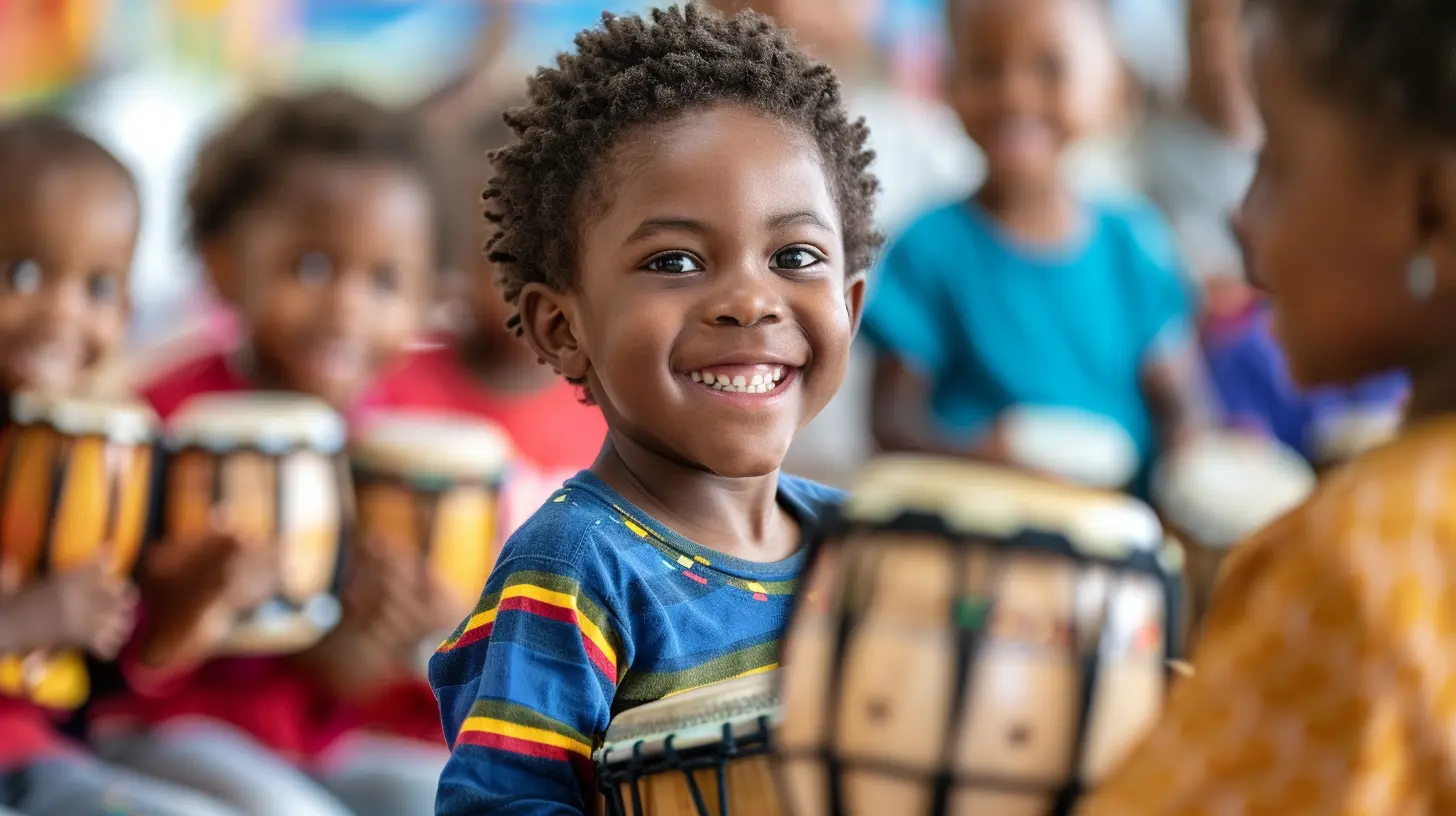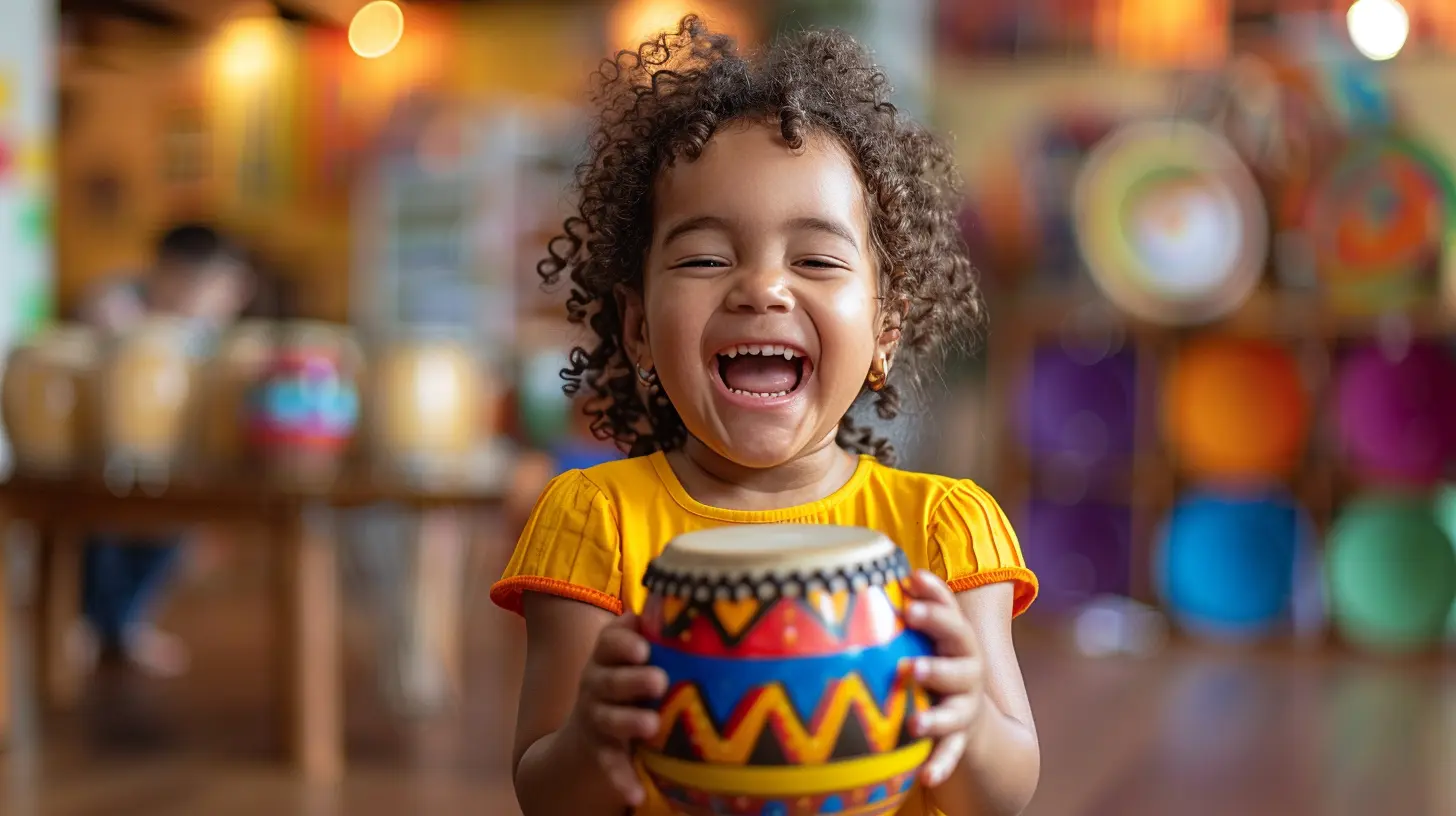7 November 2025
Children are tiny drum machines, constantly tapping, clapping, and stomping their way through life. But did you know that rhythm plays a crucial role in their development? Nope, it’s not just for future rock stars or tap dancers—rhythm is a foundational skill that shapes language, motor coordination, emotional regulation, and even intelligence.
So, if you've ever wondered why your toddler insists on banging on pots and pans like they're headlining Coachella, there’s a scientific reason behind it. Let’s dive into why rhythm matters so much in child development and how you can nurture it in your little one.

What Exactly Is Rhythm?
Before we get too deep, let’s clarify what we mean by "rhythm." It's not just about music (though that’s a big part of it). Rhythm is the ability to recognize and predict patterns in time. It’s found in speech, movement, emotions, and even daily routines.Think of rhythm as the secret sauce that makes learning, communication, and coordination possible. Without rhythm, walking would be wobbly, talking would be choppy, and dancing? Well, let’s just say it wouldn’t be pretty.

How Rhythm Shapes a Child's Development
1. Rhythm and Language Development
Ever noticed how babies love nursery rhymes? That’s because rhythm helps them absorb language. When we speak, we naturally use rhythmic patterns—stressing certain syllables, pausing between words, and maintaining a flow.Studies show that kids with strong rhythmic skills tend to have better language development. Why? Because recognizing rhythmic patterns in speech helps them break down words, making it easier to learn and communicate.
So, if you're tired of singing "Twinkle, Twinkle, Little Star" on repeat, just know that every off-key note is building your child’s language skills.
2. Rhythm and Motor Skills
Ever watched a toddler trying to walk? It’s like they're attempting to moonwalk but without any rhythm. Developing a sense of rhythm helps children coordinate their movements, whether it's crawling, walking, or catching a ball.Dancing, clapping games, and rhythmic activities improve motor coordination. When kids move in time with a beat, they strengthen the connection between their brains and bodies. That’s why music-and-movement classes aren't just adorable—they're actually helping your child fine-tune their motor skills.
3. Rhythm and Emotional Regulation
Life is full of ups and downs (or, in rhythmic terms, highs and lows). Rhythm helps kids manage their emotions by providing structure and predictability.Think about lullabies—they soothe babies because the slow, steady rhythm mimics a mother’s heartbeat. The same principle applies as kids grow. Rhythmic activities like drumming, rocking, or even breathing exercises can help calm anxious little minds.
So next time your toddler has a meltdown, try clapping a steady beat or swaying together. It might not be a miracle cure, but it’s better than negotiating with a two-year-old (which, let’s be real, never works).
4. Rhythm and Cognitive Development
Believe it or not, rhythm is closely linked to math and problem-solving skills. Patterns are everywhere in numbers, sequencing, and logic. Kids who develop strong rhythmic awareness tend to be better at recognizing patterns, which sets the stage for future math success.Think of rhythm as the training wheels for logical thinking. The more a child engages in rhythmic activities, the better they get at organizing thoughts, predicting outcomes, and making sense of the world.

How to Encourage Rhythm in Your Child
Now that we’ve established that rhythm is basically a childhood superpower, how can you help your child develop it? Here are some fun and easy ways:1. Music, Music, and More Music
Play music at home, in the car, during bath time—anytime, really. Sing along, clap, dance, and make silly beats together. The more exposure kids have to rhythm, the better their sense of timing becomes.2. Clap & Tap Games
Games like "Pat-a-Cake" or "Miss Mary Mack" aren't just for fun—they help kids develop rhythmic timing. Plus, they're a great way to sneak in some bonding time.3. Dancing Like Nobody’s Watching
Let your child move freely to music. Whether it's ballet, hip-hop, or just some wild toddler-style thrashing, moving to a beat strengthens their motor and coordination skills.4. Storytime with a Beat
Try reading books with a rhythmic flow—think Dr. Seuss. The rhyming and cadence help kids develop their phonetic awareness, which is a fancy way of saying it'll make learning to read a lot easier.5. Daily Routines with Rhythm
Even everyday activities can have a rhythmic flow. Brushing teeth, getting dressed, and cleaning up can all be done to a beat. When kids associate rhythm with routines, they build a stronger sense of time management and structure.
Rhythm Is Everywhere!
From the heartbeat in their chests to the songs they hum, rhythm is woven into every part of a child's life. It helps them communicate, move, regulate emotions, and think critically.So, the next time your kiddo is drumming on the dinner table, resist the urge to make them stop—because that tiny drummer might just be developing essential life skills (and who knows, maybe they’ll become the next Beethoven or Beyoncé).
Final Thoughts
Rhythm isn’t just about making music—it’s about shaping brains. Whether through singing, dancing, or even structured routines, encouraging rhythm in your child’s life sets them up for success in ways you might not even realize.So go ahead, turn up the music, skip down the sidewalk, and clap along with your little one. Because in the grand symphony of life, rhythm is what keeps us all in tune.








Alexander McCall
Could the heartbeat of a lullaby hold secrets to a child's growth? Explore how rhythm not only shapes movement but also weaves connections in the fabric of early development. What mysteries lie within the cadence of childhood?
December 13, 2025 at 3:52 AM